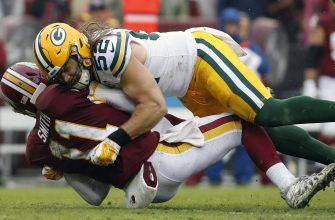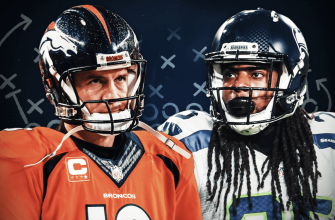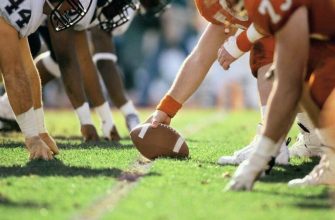A leaping penalty in football refers to a 15-yard personal foul that is assessed against defensive players who run forward and leap over an offensive lineman on field goal and extra point attempts. This penalty was introduced in the 2018 NFL season as an amendment to the league’s player safety rules.
Prior to 2018, it was legal for defenders to jump over blockers to try to block kicks as long as they did not land on or use another player to gain leverage. However, leaping over the line creates significant risk of injury as large players collide in midair. After some high-profile injuries occurred from leaping attempts, the NFL Competition Committee proposed a rule change to ban the practice and enhance player safety.
The new anti-leaping rule now prohibits defenders from running forward and leaping over the line of scrimmage on kicks. Even if the defender does not make contact with another player, the action itself warrants a 15-yard unsportsmanlike conduct foul. This aims to prevent players from leaving their feet and risking dangerous midair collisions.
When Was the Leaping Penalty Introduced?
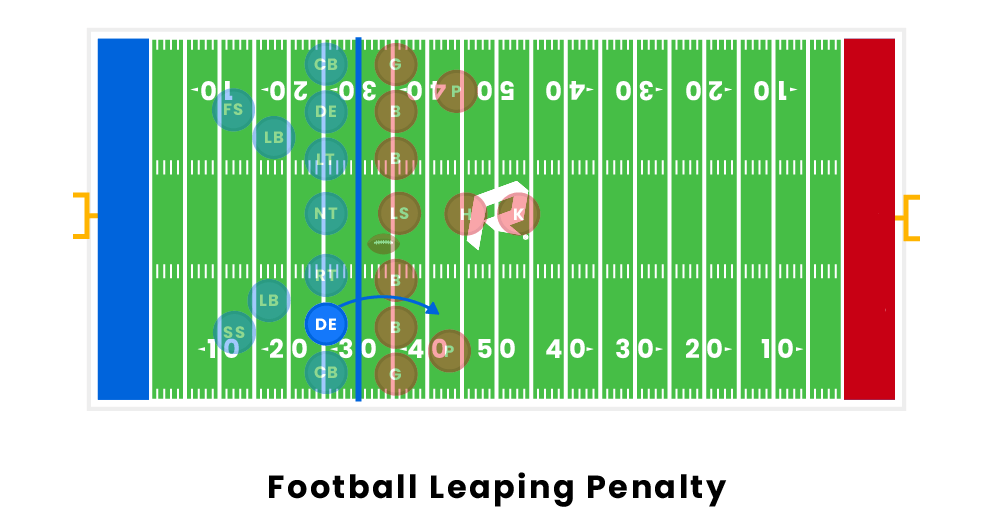
The leaping penalty was first introduced in the 1977 NFL season. Prior to this, players were allowed to jump or stand on teammates or opponents to block or attempt to block an opponent’s kick.
The rule change was brought about due to safety concerns. Defensive players leaping to block kicks resulted in injuries as the leapers fell onto the bodies below. There were also instances of the leapers’ knees making forceful contact with opponents’ heads and necks as they came down from their jumps.
To better protect players, the NFL Competition Committee decided to implement a penalty to deter players from leaving their feet to block kicks. From 1977 onward, a “leaping” penalty could be called against offending players.
What Actions Warrant a Leaping Penalty?
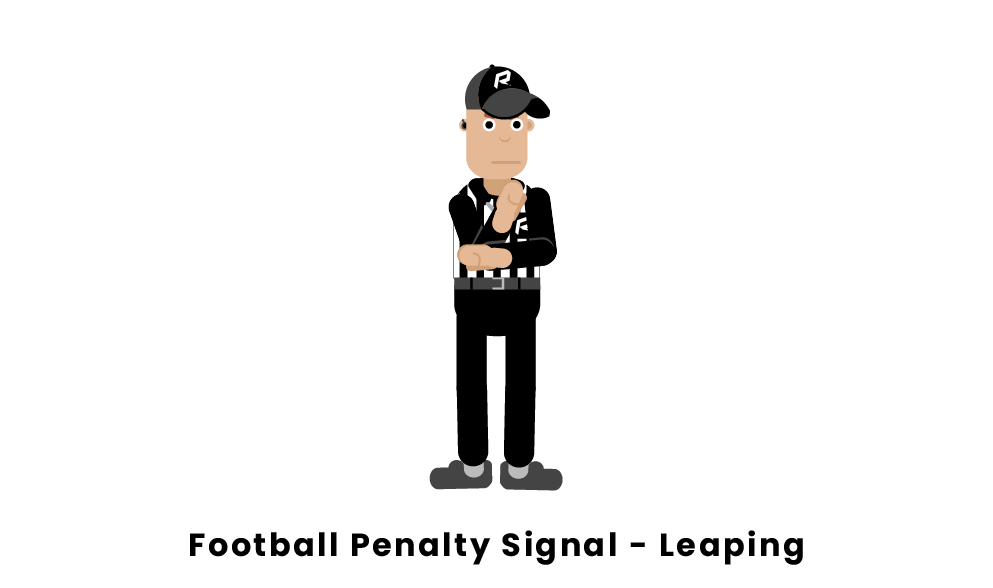
The leaping penalty is called when a defensive player uses teammates or leverage to jump over offensive linemen in an attempt to block a kick.
Specifically, there are two actions that will draw a flag for leaping:
- Jumping or standing on teammates to gain height and block a kick. Defenders cannot use another player on their team as a platform or leverage to leap over the offensive line. Even incidental contact with a teammate that aids their vertical jump is enough for a 15-yard penalty.
- Getting a running start to jump over the offensive line. Defenders cannot run up from the side and jump from more than one yard behind the line of scrimmage in an attempt to block a kick. The running start gives the leaper momentum and height advantage over stationary linemen.
The penalty was introduced to protect stationary offensive linemen from leaping defenders who could injure them by stepping on or colliding with their heads and necks. It aims to balance player safety while still allowing athletic plays by agile defensive players. But jumping straight up without aid or uncontrolled momentum is still permitted.
Examples of Leaping Penalties
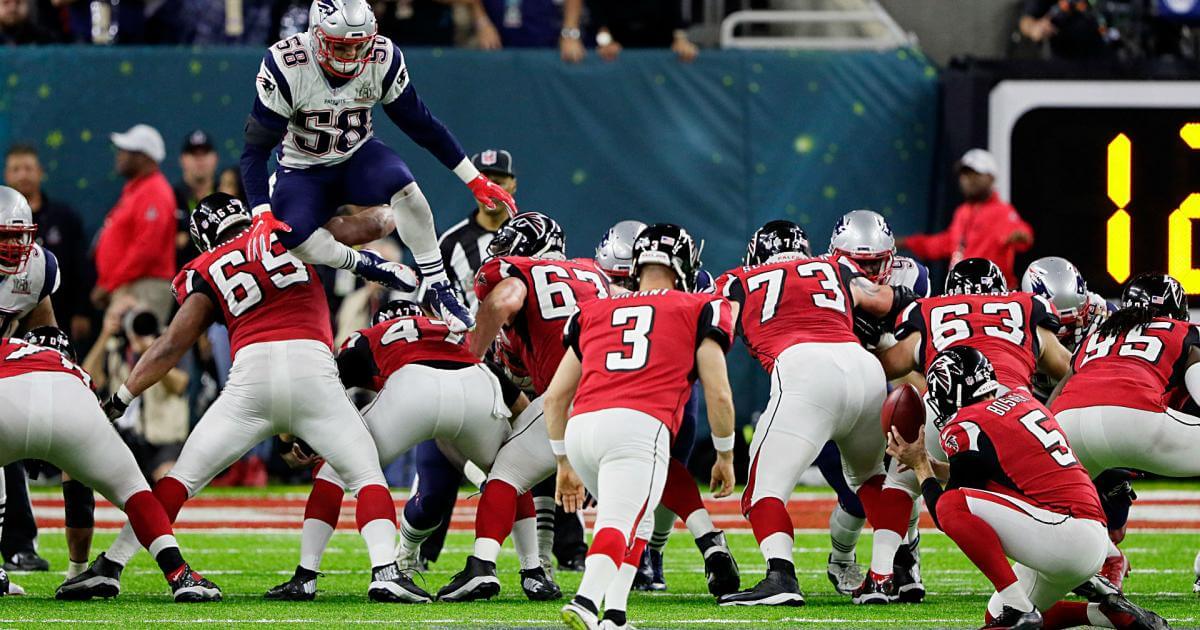
The leaping penalty has been called several times in high-profile games, drawing attention and controversy to the rule.
In a 2017 game between the Seattle Seahawks and the Philadelphia Eagles, Seahawks defender Bobby Wagner leapt over the Eagles’ line to block a field goal attempt late in the game. Wagner’s successful block sealed the Seahawks’ victory, but he was flagged and the Eagles were given a fresh set of downs.
Wagner was frustrated after the game, saying “I felt like it was the right play. I’m not going to change who I am and I’m going to keep playing how I play. If they want to keep calling it, we’ll just have to find a way around it.”
Another famous instance occurred in 2019 between the Minnesota Vikings and the New Orleans Saints. With the game tied late in the 4th quarter, Vikings defensive end Danielle Hunter leapt over the Saints’ offensive line and blocked the potential game-winning field goal, forcing overtime. However, Hunter was flagged for leaping, allowing the Saints to run down the clock and kick again from a few yards closer for the win.
After the loss, Hunter voiced his criticism of the rule, saying “I made a good play, timed the snap count perfectly, and helped my team. But because of this rule I’m penalized? It doesn’t make sense to me.”
The leaping penalty has directly influenced pivotal moments and outcomes for teams and players. Despite the controversy, the NFL has continued enforcing the rule strictly in recent seasons.
How the Rule Has Evolved Over Time
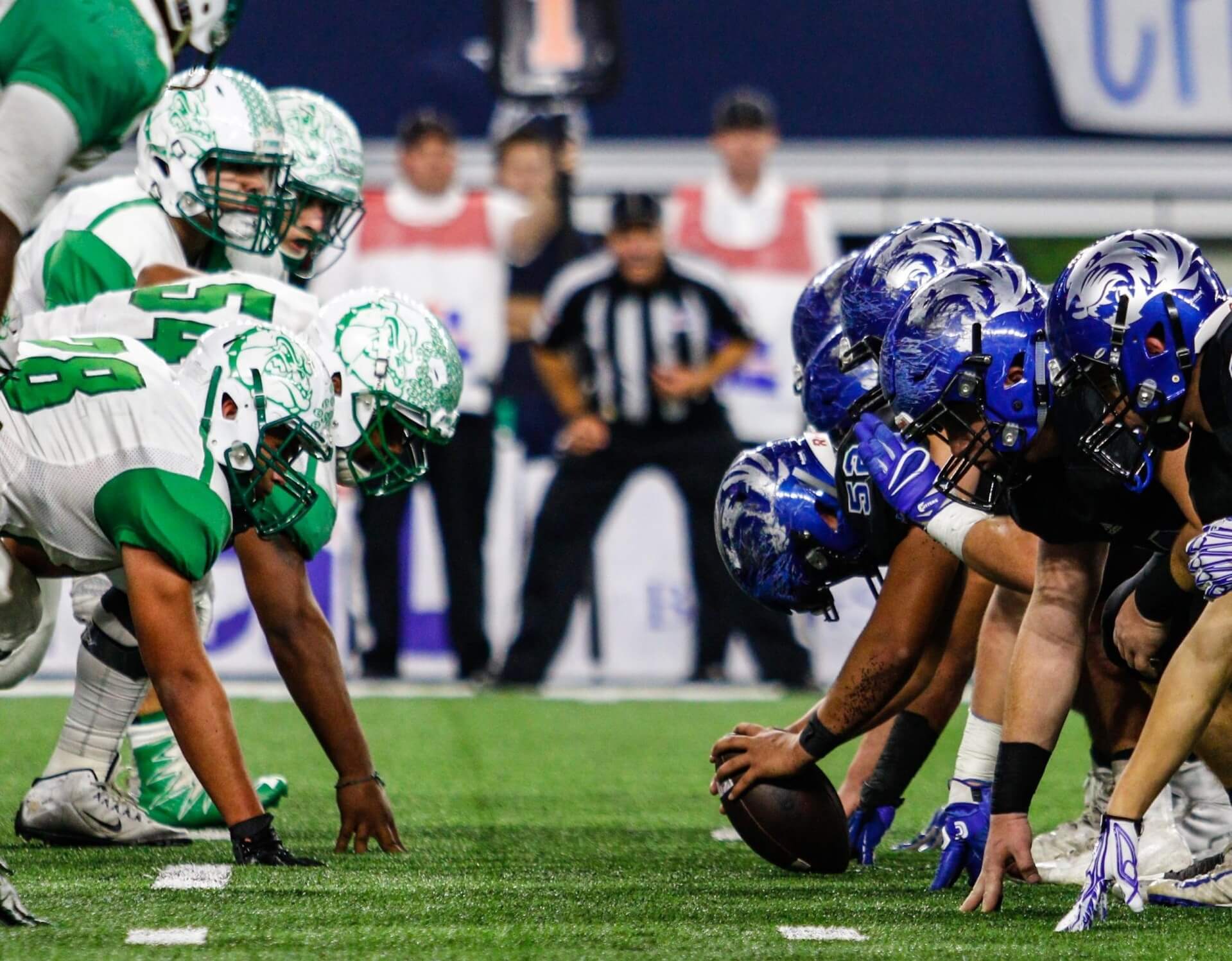
The NFL first implemented the leaping penalty in 1977, banning players from running forward and leaping in an obvious attempt to block a field goal or extra point kick. This initial rule was put in place for safety reasons, to protect stationary kickers from dangerous full-speed collisions.
In the decades after it was introduced, the rule saw several modifications and clarifications. By 2011, the wording specified that players could not run forward and leap over the frame of offensive lineman who were protecting the kicker. Defensive players were still permitted to try to block kicks by jumping straight up, but they could not use teammates or leverage to gain height.
After kickers and coaches complained of continued perceived safety issues, the league adopted a stricter interpretation of the rule in 2017. Now players cannot run forward and leap over the line at all, essentially eliminating any attempt to jump for a block. Defenders also cannot land on other players as part of an attempt.
The latest iteration of the rule has significantly reduced leaping over the line. In 2016, the last season before the change took effect, there were 3 called leaping penalties. In 2017, there were 15 flags thrown for leaping, as players adjusted to the strict new guidelines. That number dropped to 8 in 2018 and just 1 in 2019, indicating the rule is having its intended deterrent effect.
While initially met with criticism from some defenders and fans, the no-leaping rule has made the kicking game considerably safer. Kickers are no longer as vulnerable to being upended by defenders running from long distances. The risk of potential serious leg and knee injuries resulting from collisions has been mitigated. Overall, the evolution of the leaping penalty reflects the NFL’s increased emphasis on protecting player safety.
Arguments For the Leaping Penalty

The leaping penalty was introduced in an effort to improve player safety and prevent an unfair blocking advantage.
Improved Player Safety
- The leaping rule aims to protect players, particularly punters and kickers, from dangerous hits as they are elevated in the air trying to kick the ball. Leaping defenders risk significant injury as they hurl their bodies into the air towards an opponent’s head and torso.
- With their feet off the ground, leaping players are unable to control or adjust their tackling motion in the air. This increases the chances of helmet-to-helmet contact and other dangerous hits.
- Punters and kickers are vulnerable as they focus on kicking. By deterring leapers, the rule reduces concussion risk and other injuries.
Prevent Preventing Unfair Advantage
- Defensive players could gain an unnatural and unfair advantage by timing a leap over the line at the snap to block a kick. This violates the spirit of the game.
- The penalty helps refocus blocking strategy on technique, skill and athletic ability, rather than exploiting the snap timing.
- Leaping over the line is considered unsportsmanlike because it does not give the opponent a fair chance to defend themselves.
- The rule levels the playing field by requiring players to keep feet on the ground when rushing.
The leaping ban aims to make the game safer and more fair for all players by reducing dangerous collisions and removing the height advantage of leaping blocks.
Arguments Against the Leaping Penalty

Some have argued against the NFL’s leaping penalty, believing it infringes too much on athletic play and skill.
- Infringes on Athletic Play: The main criticism is that the rule takes away an exciting athletic move that showcases a player’s vertical leap and timing. Football is a game of intense athletic feats, and some view leaping to block a kick as a skill that should be allowed. They argue defenders should be free to jump as high as they can without restrictions.
- Penalizes Skill: Relatedly, some view players who successfully time and leap over the line to block a kick as demonstrating premium skill and effort that should be rewarded, not penalized. Some of the game’s most extraordinary and memorable plays have involved jumping and deflecting field goals or extra points at the height of their trajectory. The rule takes away the opportunity for skill players to make those athletic highlight-reel plays.
Overall, critics believe the penalty infringes too much on the athleticism and skill that makes football exciting. In their view, the rule should be repealed or amended so players can continue to make incredible leaping plays over the line without being penalized for it.
Impact on Game Strategy
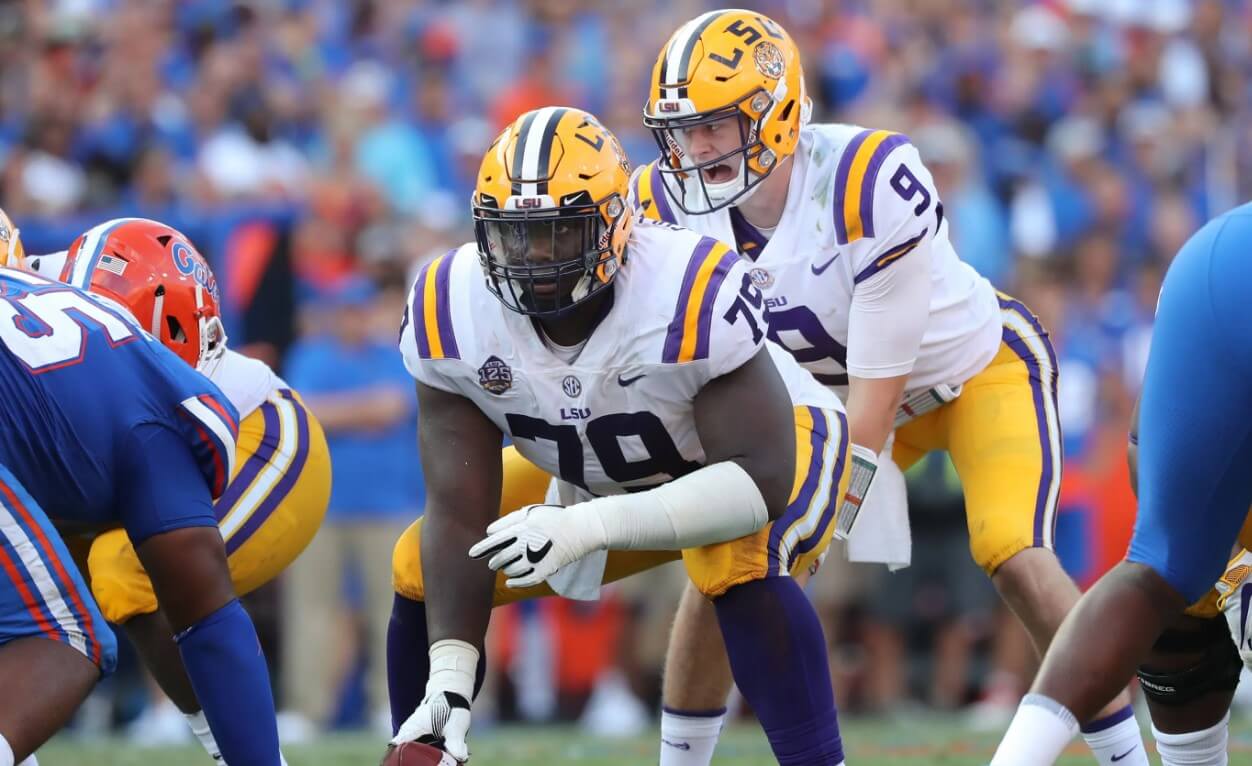
The introduction of the leaping penalty has significantly impacted game strategy and play calling in the NFL. Coaches have needed to adapt and alter their playbooks to account for the rule change.
Some of the key impacts include:
- Changes to Field Goal Blocking Schemes – Prior to the rule change, defenses would regularly try to block field goals by timing a defender’s leap over the line and blocking the kick. This dangerous but often successful technique is now strictly prohibited. As a result, NFL coaches have needed to develop alternative field goal blocking tactics focused on penetration and timing from front line defenders.
- Rise of Alternative Special Teams Blocking Formations – With leaping no longer allowed, NFL special teams coaches have designed alternative formations with more defenders along the line of scrimmage to legally try to penetrate the offensive line’s protection. Formations using 8+ defenders near the line of scrimmage are increasingly common on field goal block attempts.
- Emphasis on Fundamentals for Offensive Line – Offensive line coaches are refocusing blocking techniques on fundamentals like hand placement, footwork, and leverage. With leaping illegal, offensive linemen don’t have to defend against vertical challenges as much and can rely more on core blocking skills. Proper hand placement and arm extension have become even more critical.
- Changes to Blitz Packages – Defensive coordinators have adjusted blitz schemes, knowing that they can’t time leaping defenders over the line. There is more emphasis on disguising extra rushers and creating overload pressure from different angles. Linebackers and safeties may blitz from depth more often.
The leaping penalty has forced NFL coaching staffs to rethink aspects of special teams and pass protection. Both offensive and defensive coaches have adapted with new strategies under the current rules.
Key Statistics
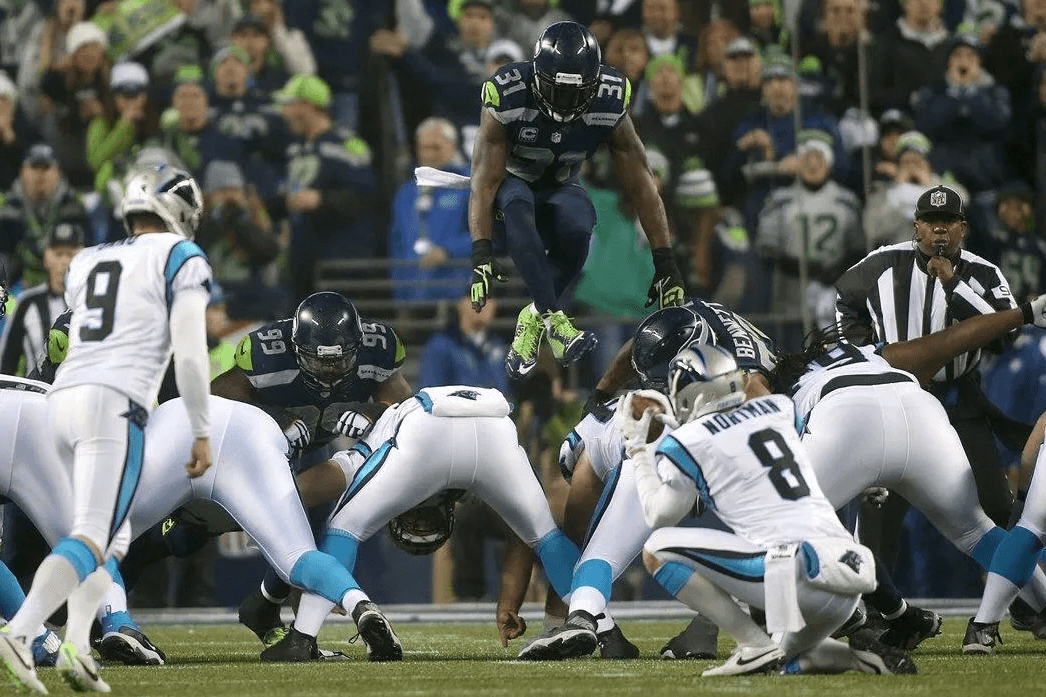
The leaping penalty has had a significant impact on blocked kicks since its introduction.
Here are some key statistics:
- In 2016, the last season before the leaping rule was implemented, there were 12 blocked kicks in the NFL. In 2017, the first year of the rule, that number dropped to 8.
- Through the first 12 weeks of the 2018 season, there were only 4 blocked kicks called, continuing a downward trend.
- Data suggests the ban has lowered the success rate of blocked field goals from 16% to 11%. For extra points, the success rate dropped from 8% to 3%.
- Roughly 1 in 10 leaping penalties result in a blocked kick. The others are either unsuccessful or draw a flag.
- Only 0.4% of all NFL plays have drawn a leaping penalty since 2017. But the number of flags thrown has risen each season.
- In 2021, there were 9 leaping penalties called, the most in a season since the ban was introduced.
- No player has been penalized for leaping more than 3 times in a season since the rule change.
The statistics indicate declining blocked kicks concurrent with more leaping penalties called over time. While a small percentage of plays draw flags, the ban has seemingly accomplished its goal of reducing potentially dangerous leaps over the line. But it remains a debated rule with arguments on both sides.
The Future of the Rule

The future of the leaping penalty rule in the NFL is unclear. There has been ongoing debate about whether the rule should be modified or eliminated entirely.
Many experts believe the rule is unlikely to change drastically in the near future. The NFL competition committee, which reviews rule changes each offseason, has defended the leaping penalty as an important player safety measure. Committee members argue that allowing defenders to leap over the line creates unnecessary risk of injury.
However, some analysts think there is a chance the rule could be relaxed. Former NFL vice president of officiating Dean Blandino said in 2019 that he could see the league allowing some flexibility for defenders when the player being blocked goes low. The competition committee has expressed interest in more clearly defining when a player is deemed to be “leaping.”
A few outspoken players and coaches have called for eliminating the rule entirely. They argue it unfairly penalizes athletic defensive players for making incredible plays. But overall there does not seem to be strong momentum to remove the ban on leaping linemen. Most experts project incremental changes at most, not a complete rollback.


